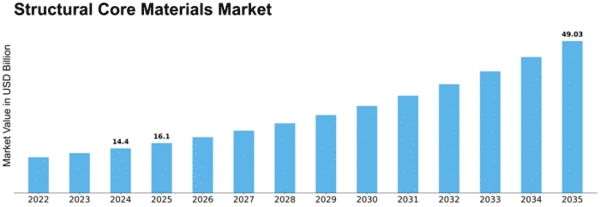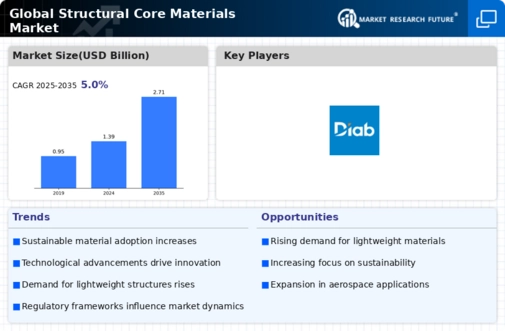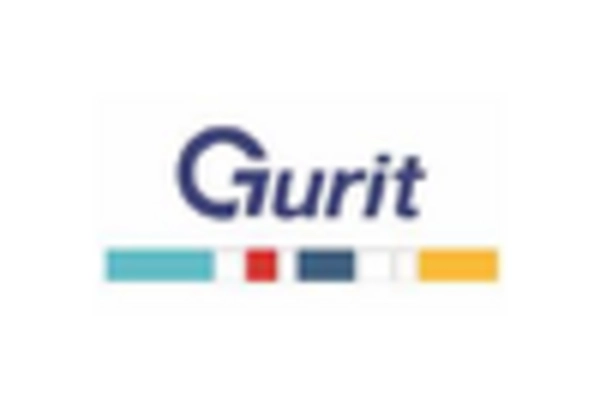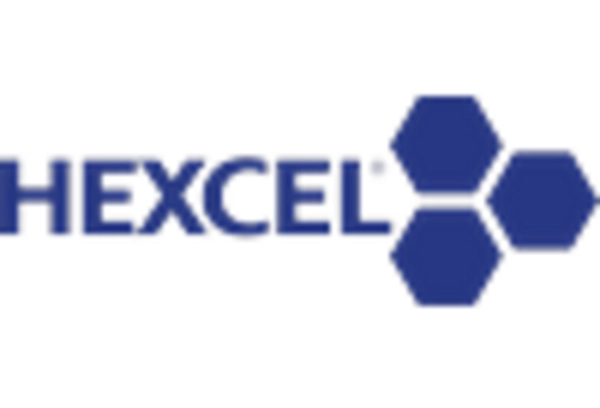-
Executive Summary
-
Scope of the Report
-
Market Definition
-
Scope of the Study
- Research Objectives
- Assumptions & Limitations
-
Markets Structure
-
Market
-
Research Methodology
-
Research Type
-
Secondary Research
-
Primary Research
-
Forecast Model
-
Market Landscape
-
Supply
- Raw Material Suppliers
- Manufacturers/Producers
- Distributors/Retailers/Wholesalers/E-Commerce
- End-Users
-
Chain Analysis
-
Porter’s Five Forces Analysis
- Threat of New Entrants
- Bargaining Power of Buyers
- Bargaining Power of Suppliers
- Threat of Substitutes
- Intensity of Competitive Rivalry
-
Market Dynamics of Global Structure Core Materials Market
-
Introduction
-
Drivers
-
Restraints
-
Opportunities
-
Challenges
-
Trends/Products
-
Global Structure Core Materials Market, by Product
-
Introduction
-
Foam
- Market Estimates & Forecast, 2021-2030
- Market Estimates & Forecast, by Region, 2021-2030
-
Balsa
- Market Estimates & Forecast, 2021-2030
-
` 6.3.2 Market Estimates
-
& Forecast, by Region, 2021-2030
-
Honeycomb
- Market Estimates
- Market Estimates & Forecast, by Region,
-
& Forecast, 2021-2030
-
Global Structure Core Materials Market, by Skin Type
-
Introduction
-
Glass Fiber Reinforced Polymer (GFRP)
- Market
- Market Estimates & Forecast,
-
Estimates & Forecast, 2021-2030
-
by Region, 2021-2030
-
Carbon Fiber Reinforced Polymer (CFRP)
- Market Estimates & Forecast,
-
Market Estimates & Forecast, 2021-2030
-
by Region, 2021-2030
-
Natural Fiber Reinforced Polymer (NFRP)
- Market Estimates & Forecast,
-
Market Estimates & Forecast, 2021-2030
-
by Region, 2021-2030
-
Others
- Market Estimates & Forecast,
- Market Estimates & Forecast, by Region, 2021-2030
-
Global Structure Core Materials Market, by End-Use Industry
-
Introduction
-
Aerospace
- Market Estimates & Forecast, 2021-2030
-
Market Estimates & Forecast, by Region, 2021-2030
-
Automotive
- Market Estimates & Forecast,
-
Market Estimates & Forecast, 2021-2030
-
by Region, 2021-2030
-
Wind Energy
- Market Estimates & Forecast,
- Market Estimates & Forecast, by Region, 2021-2030
- Market Estimates & Forecast, 2021-2030
- Market Estimates
-
Marine
-
& Forecast, by Region, 2021-2030
-
Construction
- Market Estimates
- Market Estimates & Forecast, by Region,
-
& Forecast, 2021-2030
-
Others
- Market Estimates & Forecast, 2021-2030
- Market Estimates & Forecast, by Region, 2021-2030
-
Global Structure
-
Core Materials Market, by Region
-
Introduction
-
North America
- Market Estimates & Forecast, 2021-2030
- Market Estimates &
- Market Estimates & Forecast, by Skin
- Market Estimates & Forecast, by End-Use Industry,
- U.S.
- Canada
-
Forecast, by Product, 2021-2030
-
Type, 2021-2030
-
Estimates & Forecast, by Skin Type, 2021-2030
-
& Forecast, by End-Use Industry, 2021-2030
-
Estimates & Forecast, 2021-2030
-
by Product, 2021-2030
-
Europe
- Market Estimates & Forecast, 2021-2030
- Market
- Market Estimates &
- Market Estimates & Forecast, by
- Germany
-
Estimates & Forecast, by Product, 2021-2030
-
Forecast, by Skin Type, 2021-2030
-
End-Use Industry, 2021-2030
-
Forecast, 2021-2030
-
Market Estimates & Forecast, by End-Use Industry, 2021-2030
-
& Forecast, by Product, 2021-2030
-
by Skin Type, 2021-2030
-
Industry, 2021-2030
-
France
-
Market Estimates & Forecast, 2021-2030
-
Market Estimates
-
Market Estimates & Forecast,
-
Market Estimates & Forecast, by End-Use
-
Italy
-
Market Estimates & Forecast,
-
Market Estimates & Forecast, by Product, 2021-2030
-
Market Estimates & Forecast, by Skin Type, 2021-2030
-
Market Estimates & Forecast, by End-Use Industry, 2021-2030
-
& Forecast, by Product, 2021-2030
-
by Skin Type, 2021-2030
-
Industry, 2021-2030
-
Spain
-
Market Estimates & Forecast, 2021-2030
-
Market Estimates
-
Market Estimates & Forecast,
-
Market Estimates & Forecast, by End-Use
-
U.K.
-
Market Estimates & Forecast,
-
Market Estimates & Forecast, by Product, 2021-2030
-
Market Estimates & Forecast, by Skin Type, 2021-2030
-
Market Estimates & Forecast, by End-Use Industry, 2021-2030
-
& Forecast, by Product, 2021-2030
-
by Skin Type, 2021-2030
-
Industry, 2021-2030
-
Russia
-
Market Estimates & Forecast, 2021-2030
-
Market Estimates
-
Market Estimates & Forecast,
-
Market Estimates & Forecast, by End-Use
-
Poland
-
Market Estimates & Forecast,
-
Market Estimates & Forecast, by Product, 2021-2030
-
Market Estimates & Forecast, by Skin Type, 2021-2030
-
Market Estimates & Forecast, by End-Use Industry,2021-2030
-
of Europe
-
Rest
-
Market Estimates & Forecast, 2021-2030
-
Market Estimates & Forecast, by Product, 2021-2030
-
& Forecast, by Skin Type, 2021-2030
-
by End-Use Industry, 2021-2030
-
& Forecast, 2021-2030
-
China
-
Estimates & Forecast, by Product, 2021-2030
-
Forecast, by Skin Type, 2021-2030
-
by End-Use Industry, 2021-2030
-
Forecast, 2021-2030
-
Market Estimates
-
Market Estimates & Forecast,
-
Asia-Pacific
- Market Estimates
- Market Estimates & Forecast, by Product,
- Market Estimates & Forecast, by Skin Type, 2021-2030
- Market Estimates & Forecast, by End-Use Industry, 2021-2030
- India
-
Market Estimates & Forecast, by End-Use Industry, 2021-2030
-
& Forecast, by Product, 2021-2030
-
by Skin Type, 2021-2030
-
Industry, 2021-2030
-
& Forecast, 2021-2030
-
Rest of Asia-Pacific
-
Estimates & Forecast, by Skin Type, 2021-2030
-
& Forecast, by End-Use Industry, 2021-2030
-
& Forecast, by Product, 2021-2030
-
by Skin Type, 2021-2030
-
Estimates & Forecast, by Skin Type, 2021-2030
-
& Forecast, by End-Use Industry, 2021-2030
-
Estimates & Forecast, 2021-2030
-
by Product, 2021-2030
-
Estimates & Forecast, by Skin Type, 2021-2030
-
& Forecast, by End-Use Industry, 2021-2030
-
Estimates & Forecast, 2021-2030
-
by Product, 2021-2030
-
Forecast, 2021-2030
-
Japan
-
Market Estimates & Forecast, 2021-2030
-
Market Estimates
-
Market Estimates & Forecast,
-
Market Estimates & Forecast, by End-Use
-
Australia & New Zealand
-
Market Estimates
-
Market Estimates & Forecast, by Product,
-
Market Estimates & Forecast, by Skin Type, 2021-2030
-
Market Estimates & Forecast, by End-Use Industry, 2021-2030
-
Market Estimates & Forecast, 2021-2030
-
Market Estimates & Forecast, by Product, 2021-2030
-
Market
-
Market Estimates
-
Middle East & Africa
- Market Estimates & Forecast, 2021-2030
- Market Estimates
- Market Estimates & Forecast,
- Market Estimates & Forecast, by End-Use Industry,
- G.C.C.
- Israel
- North Africa
- Turkey
- Rest of the Middle East & Africa
-
Market Estimates & Forecast, by End-Use Industry, 2021-2030
-
Latin America
- Market Estimates & Forecast, 2021-2030
- Market Estimates &
- Market Estimates & Forecast, by Skin
- Market Estimates & Forecast, by End-Use Industry,
- Brazil
- Mexico
- Argentina
-
Forecast, by Product, 2021-2030
-
Type, 2021-2030
-
Estimates & Forecast, by Skin Type, 2021-2030
-
& Forecast, by End-Use Industry, 2021-2030
-
Estimates & Forecast, 2021-2030
-
by Product, 2021-2030
-
Market Estimates & Forecast, by Product, 2021-2030
-
& Forecast, by Skin Type, 2021-2030
-
by End-Use Industry, 2021-2030
-
Estimates & Forecast, 2021-2030
-
by Product, 2021-2030
-
Market Estimates
-
Market Estimates & Forecast,
-
Rest of Latin America
-
Market
-
Market Estimates & Forecast,
-
Market Estimates & Forecast, by Skin Type,
-
Market Estimates & Forecast, by End-Use Industry, 2021-2030
-
Company Landscape
-
Introduction
-
Market Strategy
-
Key Development Analysis
-
(Expansions/Mergers & Acquisitions/Joint Ventures/New
-
Product Developments/Agreements/Investments)
-
Company Profiles
-
Diab Group
-
Product/Business Segment Overview
-
Strategy
-
Technologies
-
Product/Business Segment Overview
-
Strategy
-
Holding
-
Product/Business Segment Overview
-
Strategy
-
Tiansheng New Materials Co. Ltd.
-
Updates
-
Segment Overview
-
SWOT Analysis
-
Financial Updates
-
Segment Overview
-
SWOT Analysis
-
Company Overview
-
Financial Updates
-
Strategy
-
Key Developments
-
SWOT Analysis
-
Hexcel Corporation
- Company Overview
- Financial Updates
- Product/Business Segment Overview
- Key Developments
- SWOT Analysis
-
Schweiter
- Company Overview
- Financial Updates
- Strategy
- Key Developments
- SWOT Analysis
-
Euro Composites
- Company Overview
- Financial Updates
- Product/Business Segment Overview
- Key Developments
- SWOT Analysis
-
Gurit
- Company Overview
- Financial Updates
- Strategy
- Key Developments
- SWOT Analysis
-
The Gill Corporation
- Company Overview
- Financial Updates
- Product/Business Segment Overview
- Key Developments
- SWOT Analysis
-
Changzhou
- Company Overview
- Financial
- Product/Business Segment Overview
- Strategy
- Key Developments
- SWOT Analysis
-
Plascore Incorporated
- Company Overview
- Financial Updates
- Product/Business
- Strategy
- Key Developments
-
Armacell International
- Company Overview
- Product/Business Segment Overview
- Strategy
- Key Developments
- SWOT Analysis
-
Evonik Industries
- Company Overview
- Financial Updates
- Product/Business
- Strategy
- Key Developments
-
Conclusion
-
LIST OF TABLES
-
Global
-
Structure Core Materials Market, by Region, 2021-2030
-
North America:
-
Structure Core Materials Market, by Country, 2021-2030
-
Europe: Structure
-
Core Materials Market, by Country, 2021-2030
-
Asia-Pacific: Structure
-
Core Materials Market, by Country, 2021-2030
-
Middle East & Africa:
-
Structure Core Materials Market, by Country, 2021-2030
-
Latin America:
-
Structure Core Materials Market, by Country, 2021-2030
-
Global Structure
-
Core Materials Product Market, by Region, 2021-2030
-
North America:
-
Structure Core Materials Product Market, by Country, 2021-2030
-
Europe:
-
Structure Core Materials Product Market, by Country, 2021-2030
-
Table10 Asia-Pacific:
-
Structure Core Materials Product Market, by Country, 2021-2030
-
Table11 Middle
-
East & Africa: Structure Core Materials Product Market, by Country, 2021-2030
-
Table12 Latin America: Structure Core Materials Product Market, by Country, 2021-2030
-
Table13 Global Structure Core Materials Skin Type Market, by Region, 2021-2030
-
Table14 North America: Structure Core Materials Skin Type Market, by Country,
-
Table15 Europe: Structure Core Materials Skin Type Market, by Country,
-
Table16 Asia-Pacific: Structure Core Materials Skin Type Market,
-
by Country, 2021-2030
-
Table17 Middle East & Africa: Structure Core Materials
-
Skin Type Market, by Country, 2021-2030
-
Table18 Latin America: Structure Core
-
Materials Skin Type Market, by Country, 2021-2030
-
Table19 Global Structure
-
Core Materials End-Use Industry Market, by Region, 2021-2030
-
Table20 North
-
America: Structure Core Materials End-Use Industry Market, by Country, 2021-2030
-
Table21 Europe: Structure Core Materials End-Use Industry Market, by Country,
-
Table22 Asia-Pacific: Structure Core Materials End-Use Industry Market,
-
by Country, 2021-2030
-
Table23 Middle East & Africa: Structure Core Materials
-
End-Use Industry Market, by Country, 2021-2030
-
Table24 Latin America: Structure
-
Core Materials End-Use Industry Market, by Country, 2021-2030
-
Table25 Global
-
Product Market, by Region, 2021-2030
-
Table26 Global Skin Type Market, by Region,
-
Table27 Global End-Use Industry Market, by Region, 2021-2030
-
Table28
-
North America: Structure Core Materials Market, by Country, 2021-2030
-
Table29
-
North America: Structure Core Materials Market, by Product, 2021-2030
-
Table30
-
North America: Structure Core Materials Market, by Skin Type, 2021-2030
-
Table31
-
North America: Structure Core Materials Market, by End-Use Industry, 2021-2030
-
Table32 Europe: Structure Core Materials Market, by Country, 2021-2030
-
Table33
-
Europe: Structure Core Materials Market, by Product, 2021-2030
-
Table34 Europe:
-
Structure Core Materials Market, by Skin Type, 2021-2030
-
Table35 Europe: Structure
-
Core Materials Market, by End-Use Industry, 2021-2030
-
Table36 Asia-Pacific:
-
Structure Core Materials Market, by Country, 2021-2030
-
Table37 Asia-Pacific:
-
Structure Core Materials Market, by Product, 2021-2030
-
Table38 Asia-Pacific:
-
Structure Core Materials Market, by Skin Type, 2021-2030
-
Table39 Asia-Pacific:
-
Structure Core Materials Market, by End-Use Industry, 2021-2030
-
Table40 Middle
-
East & Africa: Structure Core Materials Market, by Country, 2021-2030
-
Table41
-
Middle East & Africa Structure Core Materials Market, by Product, 2021-2030
-
Table42 Middle East & Africa Structure Core Materials Market, by Skin Type,
-
Table43 Middle East & Africa: Structure Core Materials Market,
-
by End-Use Industry, 2021-2030
-
Table44 Latin America: Structure Core Materials
-
Market, by Country, 2021-2030
-
Table45 Latin America Structure Core Materials
-
Market, by Product, 2021-2030
-
Table46 Latin America Structure Core Materials
-
Market, by Skin Type, 2021-2030
-
Table47 Latin America: Structure Core Materials
-
Market, by End-Use Industry, 2021-2030
-
LIST OF FIGURES
-
FIGURE 1
-
Global Structure Core Materials Market Segmentation
-
Forecast Research
-
Methodology
-
Five Forces Analysis of Global Structure Core Materials
-
Market
-
Value Chain of Global Structure Core Materials Market
-
FIGURE
-
Share of Global Structure Core Materials Market in 2021, by Country (%)
-
FIGURE
-
Global Structure Core Materials Market, 2021-2030,
-
Global Structure
-
Core Materials Market Size by Products, 2021
-
Share of Global Structure
-
Core Materials Market, by Product, 2021-2030
-
Global Structure Core
-
Materials Market Size, by Skin Type, 2021
-
Share of Global Structure
-
Core Materials Market, by Skin Type, 2021-2030
-
Global Structure Core
-
Materials Market Size, by End-Use Industry, 2021
-
Share of Global
-
Structure Core Materials Market, by End-Use Industry, 2021-2030


















Leave a Comment